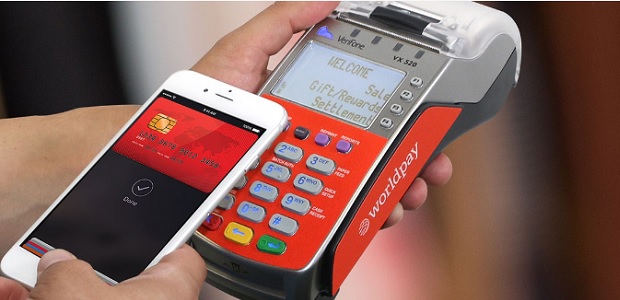
Mobile payments are fast approaching a tipping point in the UK, with spending via smartphones accelerating according to the latest consumer spending data from Worldpay.
„The number of in-store contactless transactions made via a mobile device totalled 126 million last year, with the amount spent topping £975 million. This marks a 328% year-on-year rise in in-store mobile spending; and with almost a third of consumers now taking advantage of their phone’s payment capabilities, these numbers are set for exponential growth over the next 12 months.”, according to the press release.
Accounting for 59% of all in-store mobile transactions, the supermarket sector has been an important driver in the uptake of digital wallets such as Apple Pay, Google Pay and Samsung Pay, as time-poor shoppers grab groceries on the go. Pubs, bars and restaurants make up a further 12.5% of the total spend.
But according to Worldpay’s analysis, shoppers are now starting to purchase higher value items via their smartphones. In the second half of 2017, the average spend per transaction increased by 11%*, with a notable lift-off following the increase in retailers accepting ‘limitless’ Apple Pay transactions in May. Consequently, luxury department stores and high end boutiques are now one of the fastest growing sectors for mobile payments; although the volume of mobile transactions in this category still remains a small fraction of the total (2.9%), its share of the market has more than doubled since last year.
James Frost, CMO Worldpay said: “Digital wallets are growing in popularity every day, but what’s interesting is the shift in the way people are shopping with their smartphone. No longer just restricted to light bites and post-work pints, mobile contactless payments are becoming increasingly popular for higher-end purchases too, as manufacturers integrate more sophisticated security features into handset designs.”
Recent research by Worldpay found that more than half of consumers can now see a future where mobile replaces their card within the next five years. This number rises to 65% for Gen Z (16-20 year-olds), suggesting that digital transactions could soon spell the death of the traditional wallet.
Frost continued: “Contactless cards have paved the way for mobile payment adoption, but there is still work to be done before mobile “tap and go” becomes ubiquitous. We know that three-quarters of consumers still prefer plastic when it comes to making a contactless payment, which may stem from our reliance on a physical wallet for other aspects of the checkout process, such as collecting loyalty points, or showing ID.”
“But that is all set to change over the next 12 months. The DVLA is set to launch a digital version of the traditional driving license later this year, and with more businesses looking to integrate their loyalty programs with mobile wallets, we can expect the ease of carrying just one device to win out for consumers very soon.”
Worldpay, Inc. is a leading payments provider with the capability to power global integrated omni-commerce, any payment, anywhere. Annually, Worldpay processes over 40 billion transactions through more than 300 payment types across 146 countries and 126 currencies. The company’s growth strategy includes expanding into high-growth markets, verticals and customer segments, including global eCommerce, Integrated Payments and B2B.
About the data
Figures refer to analysis of UK contactless card transactions across all sectors between 01/01/2017 and 31/12/2017, compared to 2016.
Banking 4.0 – „how was the experience for you”
„To be honest I think that Sinaia, your conference, is much better then Davos.”
Many more interesting quotes in the video below: